- Photo Safaris
- Alaska Bears & Puffins World's best Alaskan Coastal Brown Bear photo experience. Small group size, idyllic location, deluxe lodging, and Puffins!
- Participant Guestbook & Testimonials Candid Feedback from our participants over the years from our photo safaris, tours and workshops. We don't think there is any better way to evaluate a possible trip or workshop than to find out what others thought.
- Custom Photo Tours, Safaris and Personal Instruction Over the years we've found that many of our clients & friends want to participate in one of our trips but the dates we've scheduled just don't work for them or they'd like a customized trip for their family or friends.
- Myanmar (Burma) Photo Tour Myanmar (Burma) Photo Tour December 2017 -- with Angkor Wat option
- Reviews Go hands-on
- Camera Reviews Hands-on with our favorite cameras
- Lens reviews Lenses tested
- Photo Accessories Reviews Reviews of useful Photo and Camera Accessories of interest to our readers
- Useful Tools & Gadgets Handy tools and gadgets we've found useful or essential in our work and want to share with you.
- What's In My Camera Bag The gear David Cardinal shoots with in the field and recommends, including bags and tools, and why
- Articles About photography
- Getting Started Some photography basics
- Travel photography lesson 1: Learning your camera Top skills you should learn before heading off on a trip
- Choosing a Colorspace Picking the right colorspace is essential for a proper workflow. We walk you through your options.
- Understanding Dynamic Range Understanding Dynamic Range
- Landscape Photography Tips from Yosemite Landscape Photography, It's All About Contrast
- Introduction to Shooting Raw Introduction to Raw Files and Raw Conversion by Dave Ryan
- Using Curves by Mike Russell Using Curves
- Copyright Registration Made Easy Copyright Registration Made Easy
- Guide to Image Resizing A Photographers' Guide to Image Resizing
- CCD Cleaning by Moose Peterson CCD Cleaning by Moose Peterson
- Profiling Your Printer Profiling Your Printer
- White Balance by Moose Peterson White Balance -- Are You RGB Savvy by Moose Peterson
- Photo Tips and Techniques Quick tips and pro tricks and techniques to rapidly improve your photography
- News Photo industry and related news and reviews from around the Internet, including from dpreview and CNET
- Getting Started Some photography basics
- Resources On the web
- My Camera Bag--What I Shoot With and Why The photo gear, travel equipment, clothing, bags and accessories that I shoot with and use and why.
- Datacolor Experts Blog Color gurus, including our own David Cardinal
- Amazon Affiliate Purchases made through this link help support our site and cost you absolutely nothing. Give it a try!
- Forums User to user
- Think Tank Photo Bags Intelligently designed photo bags that I love & rely on!
- Rent Lenses & Cameras Borrowlenses does a great job of providing timely services at a great price.
- Travel Insurance With the high cost of trips and possibility of medical issues abroad trip insurance is a must for peace of mind for overseas trips in particular.
- Moose Peterson's Site There isn't much that Moose doesn't know about nature and wildlife photography. You can't learn from anyone better.
- Journeys Unforgettable Africa Journeys Unforgettable -- Awesome African safari organizers. Let them know we sent you!
- Agoda International discounted hotel booking through Agoda
- Cardinal Photo Products on Zazzle A fun selection of great gift products made from a few of our favorite images.
- David Tobie's Gallery Innovative & creative art from the guy who knows more about color than nearly anyone else
- Galleries Our favorite images
Nikon D810 field test–Why I’m planning to buy my review unit
Nikon D810 field test–Why I’m planning to buy my review unit
Submitted by David Cardinal on Thu, 08/21/2014 - 09:30
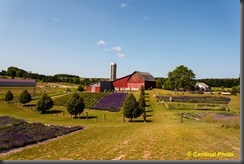 For the past few weeks I’ve been shooting with a Nikon D810 in a variety of situations. I wasn’t enough of a fan of the D800 to purchase one, so I didn’t expect to want to purchase my review Nikon D810 either. However, Nikon has done enough to improve the camera that it is now a winner for me, and this one will likely be staying right here in my camera bag. Here’s why…
For the past few weeks I’ve been shooting with a Nikon D810 in a variety of situations. I wasn’t enough of a fan of the D800 to purchase one, so I didn’t expect to want to purchase my review Nikon D810 either. However, Nikon has done enough to improve the camera that it is now a winner for me, and this one will likely be staying right here in my camera bag. Here’s why…
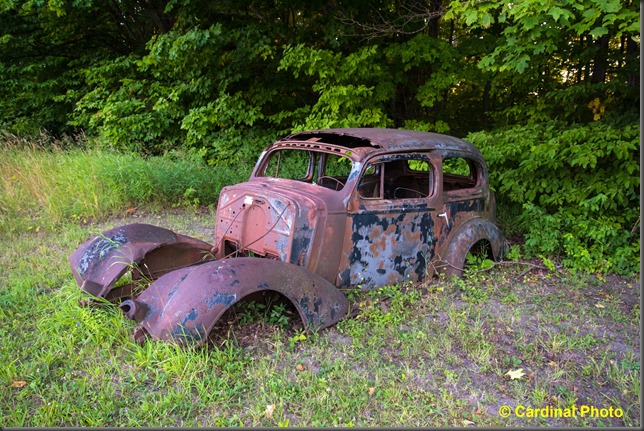
The Nikon D810 is just plain fun to shoot with!
The Nikon D810 has more than lived up to expectations. Even though the upgrades from the Nikon D800/e are each relatively minor, taken in total they represent a substantial change, and a good one. The only downside to the changes is a tiny increase in size, and – as always seems to be the case with DSLRs these days – the price drifts higher to match the price at introduction of the Nikon D800e. For those keeping score, the Nikon D810 broke the previous image quality DxOMark rating record of 95 set by the D800e with a new record of 97. Since DxO does such a detailed job of providing technical analysis of the image quality, I won’t bore you with more test shots (you can see their ratings for yourself), but instead will pass along the reasons I’m planning to keep my camera, counterpointed with reasons you may choose not to:
Reasons I’m planning to purchase the Nikon D810
- New AF Module from the Nikon D4S: The Autofocus is really great. As expected since it uses the same updated module, it is similar to my experience with the Nikon D4S (but in a smaller, less expensive, body). The addition of Group AF is surprisingly valuable, and overall the increase in speed is invaluable.
- Amazing sensor: The new sensor isn’t a huge upgrade from the Nikon D800e, but it does have improved dynamic range and slightly better color – which is saying a lot given how good the Nikon D800/e sensors are.
- Pro camera controls in a reasonable package for a non-completely-insane price. The Nikon D810 has the pro controls I learned to love, and that Nikon used to feature even on mid-range cameras like the Nikon D300 and Nikon D700, but gave up on for the Nikon D600. This includes an ISO button on top, and a 10-pin connector.
- Improved bracketing options over the Nikon D600 / Nikon D610. It goes beyond 3 frames like the “big boys” and the Nikon D800.
- Broader spread of AF points, like the D800, compared to the Nikon D610.
- Smooth, quiet shutter: No DSLR is as quiet as a good rangefinder, but the Nikon D810 is remarkably unobtrusive. I was using the new Quiet Continuous mode to photograph a pro tennis match from the stands when I realized that the regular shutter was so quiet, that it didn’t bother the other fans either!
- Fully-removed anti-aliasing filter: Unlike the sort-of-hack way the AA filter was negated in the Nikon D800e, the Nikon D810 was designed without one. For most of the photography I do, it’s not a big deal, but for those looking to eek every last pixel out of their sensor it is a nice upgrade – as is the addition of an electronic front-curtain option for the shutter when used in Mirror-lock-up mode.
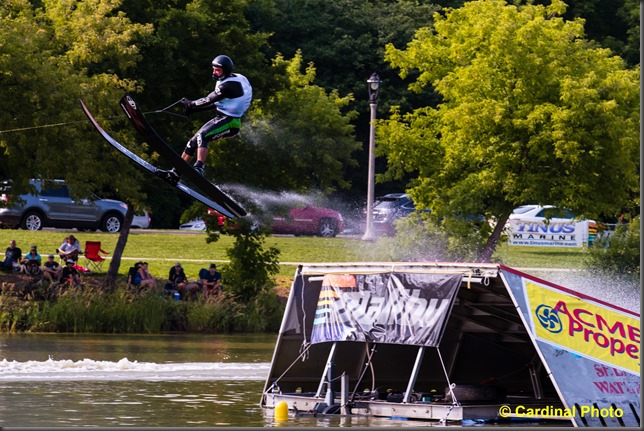
The Nikon D810 performed very well as an action camera,
thanks mostly to the new AF module.
Nikon D810, Nikon 70-200mm f/4 AF-S VR Lens, 1/1500s @ f/6, ISO 800
Reasons you might not want to purchase the Nikon D810
- Frame Rate: 5 fps is still slower than I’d like, 6-8 would make me much happier. It’s nice that the vertical grip speeds it up a little, but I wish it was to 8 fps. Unfortunately, stepping up in speed in the Nikon line pretty much means the $6000 Nikon D4S – awesome, but a monster to buy and use.
- Long in the tooth: It is not a huge update from the Nikon D800, so it is not impossible that a “Nikon D900” could emerge before I felt like I got full value from the Nikon D810. Also, Nikon is rumored to be planning a Nikon D750, that will feature a 24MP sensor and be priced at $2500, which may be an option if you don’t need the full resolution or all the features of the Nikon D810.
- CompactFlash slot: I’ve gotten used to the small-size and low-cost of SD cards, especially now that you can get them at over 100MB/s, so I’d prefer it had 2 SD slots instead of 1 SD and 1 CF. That way I could use it more easily with just my laptop or tablet and their SD slots.
- Price: At $3300, you have to really want this camera to justify it over the $2000 Nikon D610 or even the $1100 Nikon D7100. For those for whom photography is a profession or consuming passion, the difference is worth paying, but for a lot of photographers, it is a huge amount of money for what are relatively small improvements.
- Minor Update: If you already own a D800/e, then the Nikon D810 is not a huge upgrade, so it might not be worth the cost of swapping.
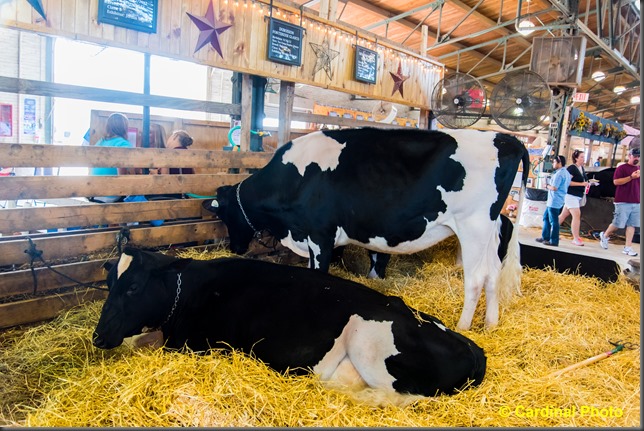 The Nikon D810 has an impressive natural dynamic range,
The Nikon D810 has an impressive natural dynamic range,
meaning HDR isn’t the only way to capture ultra-high-contrast scenes.
I shot this image to dramatize how it manages to cope well even with awful lighting.
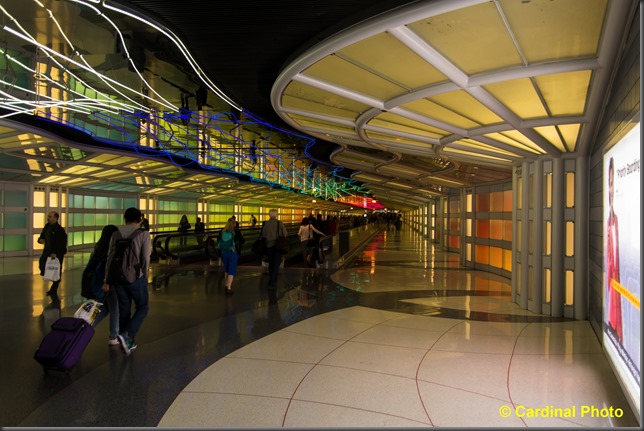
Similarly, this tunnel at O’Hare airport isn’t easy to capture in a single frame.
The Nikon D810 manages to get pretty good detail from the shadows,
while still retaining the highlights of the neon and the video wall.
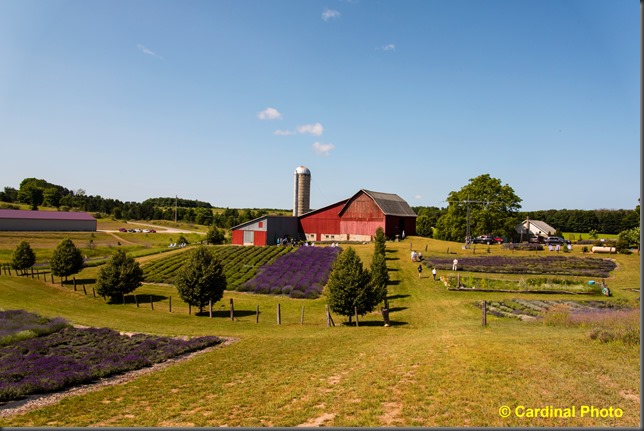
The Nikon D810’s 36MP really comes into its own for full-frame landscape shots.
It is hard, though, to make every pixel count if there is any breeze at all, because of the high resolution.
I shot this one at 1/1000s to help eliminate any movement in the scene.

